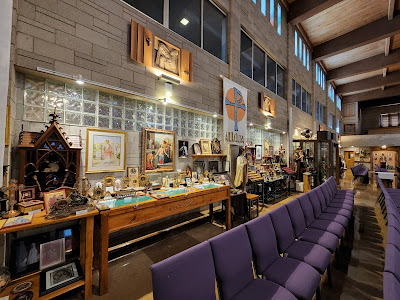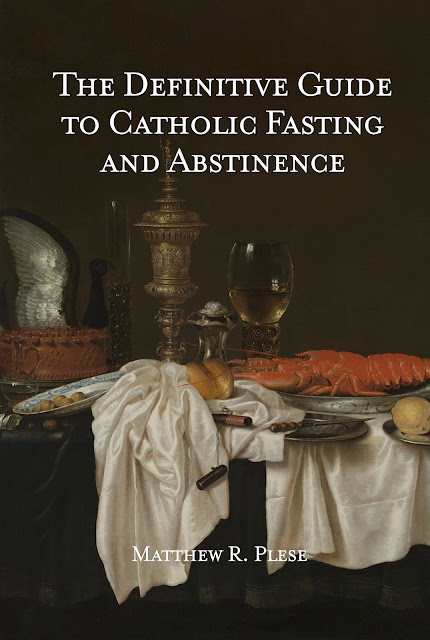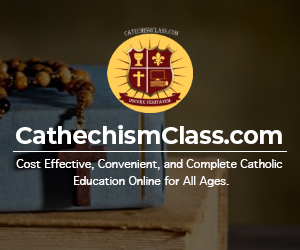BREAKING NEWS TODAY: After nearly 50 years, Roe has been responsible for the deaths of over 60 million preborn American children. Today, the Supreme Court has finally overturned the grievous error of Roe v. Wade that has cost so many precious lives.
The Souls of Baptized Infants Go Directly to Heaven
With the exception of the Most Blessed Virgin Mary, all human persons are conceived with original on their souls. Such a view is a dogma of the Faith that must be believed: “Original sin is transmitted by natural generation.” The Catechism of St. Pius X therefore counsels, "There should be the greatest anxiety to have infants baptized because, on account of their tender age, they are exposed to many dangers of death, and cannot be saved without Baptism."
In the way in which God has created the world, it is necessary to receive Baptism in order to see God in Heaven. Seeing God and being present with Him in Heaven is the beatific vision. It is the greatest joy of Heaven.
Of course, not everyone who is baptized will be saved. To be saved requires dying in the state of sanctifying grace. That is why we must work out our salvation our entire life and have frequent recourse to the Sacrament of Confession so that we may be forgiven for our mortal sins and restored to sanctifying grace. Heaven is not possible for those who die without sanctifying grace in their souls.
Because a baby who was born and who was baptized cannot commit any actual sins, we know without any doubt that these children, if they die before they are old enough to know right from wrong, will go straight to Heaven. They are truly saints.
Do the Souls of Unborn & Therefore Unbaptized Babies Go to Heaven?
"Souls who depart this life in the state of original sin are excluded from the Beatific Vision of God" (Council of Florence: 1438 – 1445 AD).
Dr. Ludwig Ott, the famous theologian, in quoting the de fide dogma of the Council of Florence teaches:
The 2nd General Council of Lyons (1274) and the Council of Florence (1438-45) declared: illorum animas, qui in actuali mortali peccato vel solo irginali decedunt, mox in infernum descendere poenis tamen disparibus puniendas (the souls of those who die in original sin as well as those who die in actual mortal sin go immediately into hell, but their punishment is very different). D 464, 693.
The dogma is supported by the words of Our Lord: "Unless a man be born again of water and the Holy Ghost he cannot enter into the Kingdom of God" (John 3, 5).
The spiritual re-birth of young infants can be achieved in an extra-sacramental manner though baptism by blood (cf. the baptism by blood of the children of Bethlehem). Other emergency means of baptism for children dying without sacramental baptism, such as prayer and desire of the parents or the Church (vicarious baptism of desire -- Cajetan), or the attainment of the use of reason in the moment of death, so that the dying child can decide for or against God (baptism of desire -- H. Klee), or suffering and death of the child as quasi-Sacrament (baptism of suffering -- H. Schell), are indeed, possible, but their actuality cannot be proved from Revelation. Cf. D 712.
In the punishment of Hell theologians distinguish between the "poena damni," which consists in the exclusion from the Beatific Vision of God, and the "poena sensus" which is caused by external means, and which will be felt by the senses even after the resurrection of the body. While St. Augustine and many Latin Fathers are of the opinion that children dying in original sin must suffer "poena sensus" also, even if only a very mild one (mitissima omnium poena: Enchir. 93), the Greek Fathers (for example, St. Gregory of Nazianzus, Or. 40, 23), and the majority of the Schoolmen and more recent theologians, teach that they suffer "poena damni" only. The declaration of Pope Innocent III, is in favour of this teaching: Poena originalis peccati est carentia visionis Dei (= poena damni) actualis vero poena peccati est gehennae perpetuae cruciatus (= poena sensus). D 410. A condition of natural bliss is compatible with "poena damni." Cf. St. Thomas, De malo, 5, 3; Sent. II d. 33 q 2 a. 2.
Theologians usually assume that there is a special place or state for children dying without baptism which they call limbus puerorum (children's Limbo). Pope Pius VI adopted this view against the Synod of Pistoia. D 1526.
Consequently, we must conclude that the souls of unbaptized and unborn children who die with original sin on their souls can not enter Heaven. But with St. Gregory of Nazianzus, Pope Pius VI, and others we can hope for an eternity of blessedness for them in the Limbo of the Infants (not to be confused with the Limbo of the Fathers where the Old Testament saints waited until Christ opened Heaven) which is a place of tranquility and peace even though they can never gaze on the face of God. This is a place of perfect natural happiness - imagine a life of happiness on a place like earth. They will not suffer the flames of hell.
Can Unbaptized, Miscarried Babies Go to Heaven Through a “Vicarious Baptism”?
It is held as de fide doctrine that along with water Baptism there is a Baptism of Blood and a Baptism of Desire that are equal in merit to water Baptism. They remove original sin from a soul and save a soul from Hell and also open the possibility of Heaven to them.
Thomas Cardinal Cajetan, a leading figure in the Catholic Church against the Protestant Revolt, held the view that there may be reason to hope for a “vicarious” Baptism of Desire of miscarried babies whose parents had intended to baptize the child at birth. While the child died in the womb before baptism, he held the hope that in God’s mercy, the children would be spared even Limbo and admitted to the beatific vision of God for all eternity.
The 1980 document by the Congregation of the Doctrine of the Faith stated: “The Church has thus shown by her teaching and practice that she knows no other way apart from Baptism for ensuring children’s entry into eternal happiness.” For the souls of miscarried babies, we can assert that they are not in Hell since they had no actual sins on their souls. But whether or not mortal sin was removed in a manner as proposed by Cardinal Cajetan is a theory that we can certainly hope is the case. But it is not certain.
Nevertheless, the parent or a priest should baptize the body of the miscarried child as soon as possible with the following formula: "If you are capable of being baptized, I baptize you in the Name of the Father and of the Son and of the Holy Ghost."
Do Aborted Babies Go to Heaven or Hell?
What does it mean for aborted children? We believe that in God's mercy these children will not suffer the pains of Hell, through no fault of their own, but they are nevertheless unable to go to Heaven since they were murdered with original sin still on their souls.
They will not be in pain. But they are not in Heaven. They will never see the face of God. They will never have a chance to enter Heaven. And since they were murdered by their own mother, there is no credible reason to hold that Cardinal Cajetan’s theory applies to them.
This sad reality is one of the many reasons that we must reject abortion completely - it deprives a human soul of Heaven. While the child will not suffer, he will never see God. And the guardian angel that God has appointed to guard that child weeps. Not only does the sin of abortion, which is the willful murder of a human being, cry out to Heaven for vengeance, but it also deprives a soul of seeing God forever.


.jpg)


.jpg)
.jpg)





.jpg)
.jpg)
.jpg)
.jpeg)































